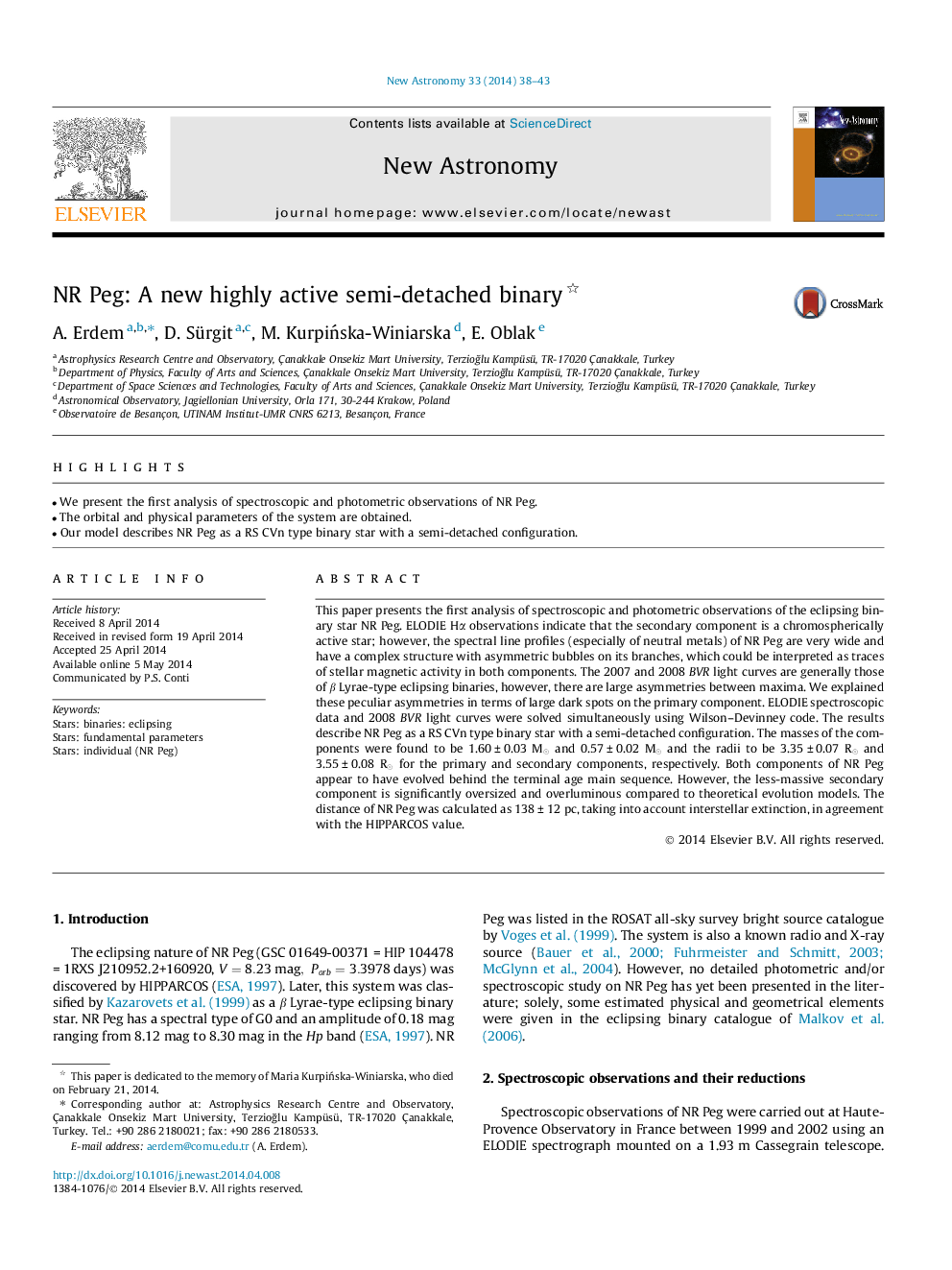| Article ID | Journal | Published Year | Pages | File Type |
|---|---|---|---|---|
| 1778867 | New Astronomy | 2014 | 6 Pages |
•We present the first analysis of spectroscopic and photometric observations of NR Peg.•The orbital and physical parameters of the system are obtained.•Our model describes NR Peg as a RS CVn type binary star with a semi-detached configuration.
This paper presents the first analysis of spectroscopic and photometric observations of the eclipsing binary star NR Peg. ELODIE Hαα observations indicate that the secondary component is a chromospherically active star; however, the spectral line profiles (especially of neutral metals) of NR Peg are very wide and have a complex structure with asymmetric bubbles on its branches, which could be interpreted as traces of stellar magnetic activity in both components. The 2007 and 2008 BVR light curves are generally those of ββ Lyrae-type eclipsing binaries, however, there are large asymmetries between maxima. We explained these peculiar asymmetries in terms of large dark spots on the primary component. ELODIE spectroscopic data and 2008 BVR light curves were solved simultaneously using Wilson–Devinney code. The results describe NR Peg as a RS CVn type binary star with a semi-detached configuration. The masses of the components were found to be 1.60 ± 0.03 M⊙M⊙ and 0.57 ± 0.02 M⊙M⊙ and the radii to be 3.35 ± 0.07 R⊙R⊙ and 3.55 ± 0.08 R⊙R⊙ for the primary and secondary components, respectively. Both components of NR Peg appear to have evolved behind the terminal age main sequence. However, the less-massive secondary component is significantly oversized and overluminous compared to theoretical evolution models. The distance of NR Peg was calculated as 138 ± 12 pc, taking into account interstellar extinction, in agreement with the HIPPARCOS value.
